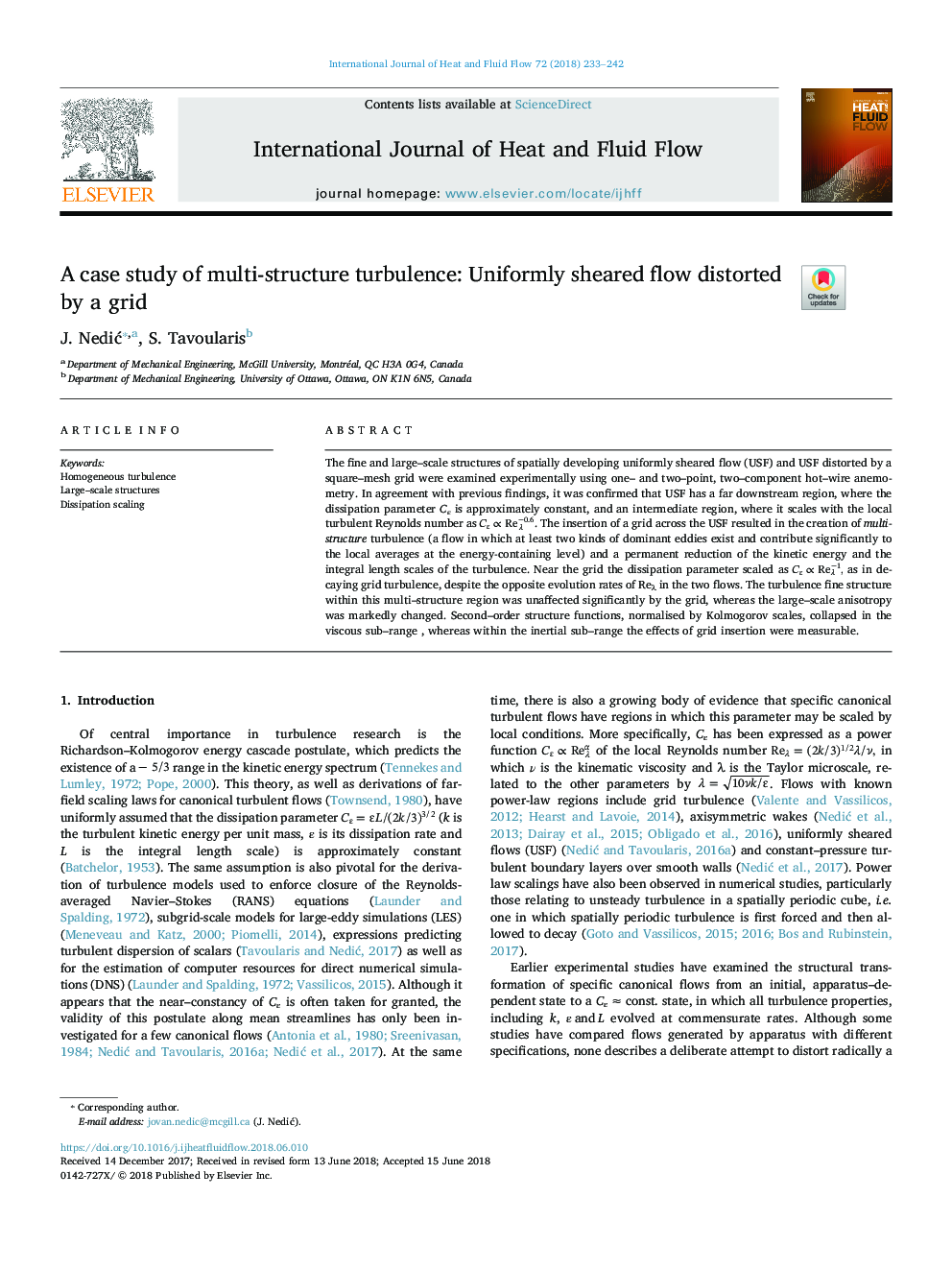| Article ID | Journal | Published Year | Pages | File Type |
|---|---|---|---|---|
| 7053446 | International Journal of Heat and Fluid Flow | 2018 | 10 Pages |
Abstract
The fine and large-scale structures of spatially developing uniformly sheared flow (USF) and USF distorted by a square-mesh grid were examined experimentally using one- and two-point, two-component hot-wire anemometry. In agreement with previous findings, it was confirmed that USF has a far downstream region, where the dissipation parameter Cε is approximately constant, and an intermediate region, where it scales with the local turbulent Reynolds number as CÉâReλâ0.6. The insertion of a grid across the USF resulted in the creation of multi-structure turbulence (a flow in which at least two kinds of dominant eddies exist and contribute significantly to the local averages at the energy-containing level) and a permanent reduction of the kinetic energy and the integral length scales of the turbulence. Near the grid the dissipation parameter scaled as CÉâReλâ1, as in decaying grid turbulence, despite the opposite evolution rates of Reλ in the two flows. The turbulence fine structure within this multi-structure region was unaffected significantly by the grid, whereas the large-scale anisotropy was markedly changed. Second-order structure functions, normalised by Kolmogorov scales, collapsed in the viscous sub-range , whereas within the inertial sub-range the effects of grid insertion were measurable.
Keywords
Related Topics
Physical Sciences and Engineering
Chemical Engineering
Fluid Flow and Transfer Processes
Authors
J. NediÄ, S. Tavoularis,
